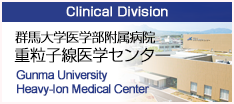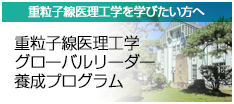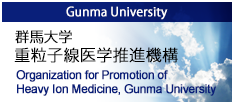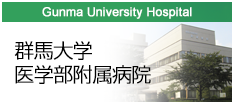GUNMA UNIVERSITY
HEAVY ION MEDICAL CENTER
(Research Institute)
Background
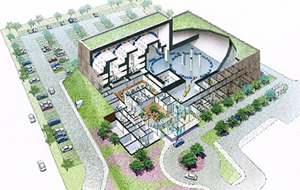
Heavy ions are ions that have higher atomic numbers such as carbon, neon and argon. These ions have unique characteristics in the treatment of cancer because of their higher dose convergence into the target volume. They also produce 2-3 times higher biological effect compared to X/gamma-rays. For these reasons, heavy ions enable us to attack cancers yet cause minimal damage to normal tissues and effectively treat cancers resistant to conventional radiation. Furthermore, because heavy ion radiotherapy is a method of “non-invasive cancer therapy,” vital organs are preserved. Most importantly, this treatment improves the patient’s quality of life (QOL) and allows the patient to return normal life earlier than conventional cancer treatment.
Since it began clinical trials of carbon ion cancer therapy in June 1994, the National Institute of Radiological Sciences (NIRS, Chiba, Japan) has treated more than 3000 patients as of March, 2007. As a result of their success, therapy using heavy-ion beams was recognized as an advanced medical technology by the Ministry of Health, Labour and Welfare in October 2003, when fee-based treatments were allowed. In addition to the facility at Chiba, the Hyogo Ion Beam Medical Center performed clinical trials using carbon ion for approximately 30 patients in 2002, and this was also certified as advanced medical technology in January, 2005. Abroad, the Gesellschaft fur Schwerionenforschung (GSI) in Darmstadt, Germany has conducted carbon ion radiotherapy since 1997, and a new heavy-ion facility is currently under construction at Heidelberg University.
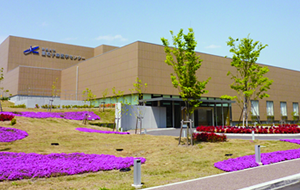
The 5-year survival rates for several types of cancer at NIRS were as follows: prostate cancer: ~95%, non-small cell lung cancer (stage I): ~70%, malignant melanoma at head and neck: ~50%, locally advanced osteosarcoma at the paraspine or the pelvis: ~50%, recurrent or advanced hepatocellular cancer: ~50%, locally advanced uterine cervical cancer (III-IV stage): ~45%, etc. Considering that the above trials were performed as dose escalation studies (phase I/II study) and the majority of the tumors were unresectable, i.e. unable to be operated on, and/or locally advanced, the results are excellent. In particular, bulky tumors in many sites were effectively controlled, and patients with lung cancers from emphysema were successfully treated without severe complications. In the treatment of osteosarcoma, one of the most difficult cancers to treat, osseous tissues recovered after the tumor disappeared. Dramatic results were obtained in terms of not only high tumor control but also organ conservation. Furthermore, in other cancer sites such as lung cancer and hepatocellular cancer, only 1-4 days of treatment need be performed. Shorter hospitalization means that patients have a better quality of life.
Gunma University has focused on the heavy-ion radiotherapy which is function-conservative and less-invasive cancer-treatment engaging improvement of patients’ QOL and social rehabilitation, and has prepared to install a heavy ion treatment system in our campus from 2001, the first such university facility in Japan. The heavy ion radiotherapy facility will provide a comprehensive cancer treatment system centered around heavy-ion radiotherapy at the University Hospital, carry out comparative clinical trials using other treatment approaches and also combinations of them. In addition, we will conduct research on applying indications of heavy-ion radiotherapy to small-sized cancers, benign tumors such as pituitary tumors, and also to cerebrovascular disease, by developing highly accurate carbon-ion micro-surgery techniques.

The cancer treatment facility in GHMC will be the smallest of its kind in Japan. It is approximately 45 m x 65 m and 20 m high, including a synchrotron with a 20 m diameter to accelerate carbon ions up to 70% of light speed. Patients are irradiated in three treatment rooms. This facility will be the first compact heavy-ion irradiation system for wide-spread use. The research and development has been promoted mainly by National Institute of Radiological Sciences. Gunma University began construction of the facility in 2006 and clinical trials are scheduled to begin in fiscal 2009 under a joint project with Gunma Prefecture. It is hoped the facility will be a centerpiece in the cooperation with medical institutions in the region, in order to establish an advanced and integrated medical care system for cancers in the Gunma medical district. The Center will serve as a model for implementing regional heavy-ion treatment centers throughout Japan.


